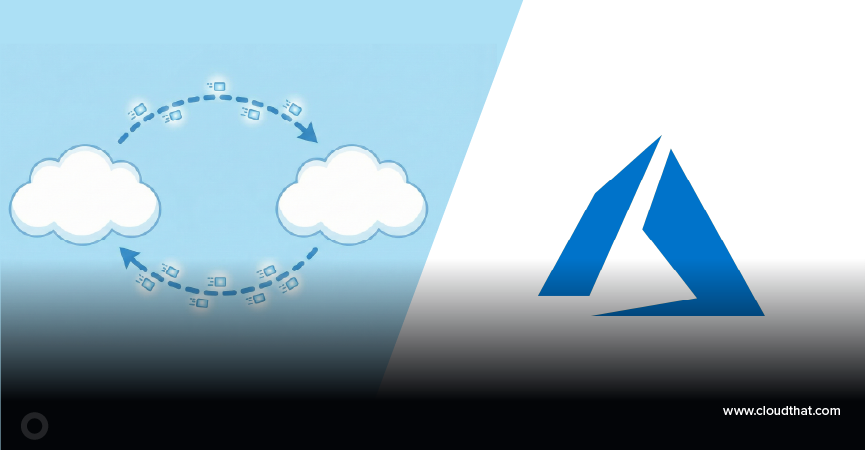|
Voiced by Amazon Polly |
Introduction:
Kubernetes (K8s) has become synonymous with container orchestration, automating the deployment, scaling, and management of containerized applications. While it shines in production environments, its capabilities can significantly improve the development experience. This blog delves into how K8s empowers developers by streamlining workflows, fostering collaboration, and enabling rapid experimentation.
Freedom Month Sale — Upgrade Your Skills, Save Big!
- Up to 80% OFF AWS Courses
- Up to 30% OFF Microsoft Certs
- Ends August 31
Traditional Development: Bottlenecks and Challenges
Before exploring K8s’ benefits, let’s revisit the challenges developers often face in traditional workflows:
- Inconsistent Environments: Manually configuring individual development environments is error-prone and time-consuming. Inconsistencies lead to unexpected behavior and hinder debugging.
- Cumbersome Deployments: Traditional deployments involve manual steps and complex scripts, slowing down iteration cycles and hindering agile development practices.
- Limited Collaboration: Managing different environments for multiple developers becomes cumbersome, leading to conflicts and ineffective collaboration.
- Difficult Experimentation: Trying out new tools, libraries, or configurations often requires setting up separate environments, hindering innovation and exploration.
These challenges can stifle developer productivity and impede the development process. K8s offers a solution by providing a standardized and automated approach to managing and deploying containerized applications.
Embracing K8s in Development: A Game Changer
Integrating K8s into the development workflow offers a plethora of advantages:
- Simplified Deployments and Configuration Management:
K8s uses declarative YAML files to define the desired state of your application in a consistent and human-readable format. These files specify the pods, containers, and configurations needed to run your application. K8s handles the underlying infrastructure to bring your application to life, minimizing errors and streamlining the process.
YAML
Code Snippet:
|
1 2 3 4 5 6 7 8 9 10 11 12 13 14 15 16 17 18 19 20 |
# app-deployment.yaml apiVersion: apps/v1 kind: Deployment metadata: name: my-app spec: replicas: 2 # Number of pod replicas selector: matchLabels: app: my-app template: metadata: labels: app: my-app spec: containers: - name: my-app image: my-app-image:latest port: - containerPort: 8080 |
- Local Development with Minikube:
Setting up a local K8s cluster might seem intimidating, but tools like Minikube make it easy. Minikube is a single-node K8s implementation that runs inside a virtual machine, allowing developers to experiment with K8s features and deploy applications locally without affecting production environments. This enables faster development cycles efficient testing, and facilitates debugging.
Code Snippet:
|
1 |
minikube start |
- Rapid Iterations and Experimentation:
With automated deployments and consistent environments, developers can focus on code changes and quickly iterate on their applications. K8s simplifies rollbacks to previous versions if necessary, encouraging experimentation without the fear of breaking the system. This fosters a culture of innovation and allows developers to explore new ideas and solutions more readily.
- Streamlined Collaboration:
K8s provides a single platform for developers to share and collaborate on deployments. Namespaces enable developers to isolate their workspaces, preventing conflicts and ensuring everyone has a consistent environment. This makes collaboration on large projects easier and more efficient.
- Integration with CI/CD Pipelines:
K8s integrates seamlessly with popular CI/CD (Continuous Integration/Continuous Delivery) tools like Jenkins and GitLab CI/CD. This allows developers to automate the build, test, and deployment process, ensuring consistency and efficiency throughout the development lifecycle.
- Enhanced Observability and Debugging:
K8s provides built-in tools for monitoring and troubleshooting applications. Tools like kubectl logs and kubectl describe allow developers to access logs, inspect pod details, and gain insights into the health of their applications. Additionally, integrating tools like Prometheus and Grafana with K8s provides detailed application metrics and visualizations, further aiding in debugging and performance optimization.
Additional Considerations: Security and Resource Management
While K8s offers numerous benefits for development, it’s important to consider security and resource management:
- Security: Implementing proper security practices, including development clusters, is crucial in any K8s environment. Securing your cluster involves Role-Based Access Control (RBAC), which restricts access to resources based on user roles and permissions.
- Network Policies: Controlling how pods in your cluster can communicate with each other and external networks.
- Pod Security Policies: Setting security contexts for pods to enforce security best practices.
- Resource Management: K8s dynamically allocates resources to pods based on their defined requests and limits. Requests represent the minimum resources a pod needs to run, while limits define the maximum resources it can consume. This ensures resources are utilized efficiently and prevents a single pod from starving others. Tools like kubectl top pods and kubectl top nodes can monitor resource usage and identify potential bottlenecks.
Code Snippet:
YAML
|
1 2 3 4 5 6 7 8 9 10 11 12 13 14 15 16 17 18 19 20 21 22 23 24 25 26 27 |
# app-deployment.yaml (modified) apiVersion: apps/v1 kind: Deployment metadata: name: my-app spec: replicas: 2 # Number of pod replicas selector: matchLabels: app: my-app template: metadata: labels: app: my-app spec: containers: - name: my-app image: my-app-image:latest port: - containerPort: 8080 resources: requests: memory: "100Mi" cpu: "100m" limits: memory: "200Mi" cpu: "200m" |
Conclusion:
K8s empowers developers by streamlining workflows, fostering collaboration, and enabling rapid experimentation. By embracing K8s in the development process, developers can:
- Reduce time spent on manual configurations and deployments.
- Experiment with new technologies and iterate code changes more quickly.
- Collaborate effectively on large projects with consistent and isolated environments.
- Gain valuable insights into application health and performance.
While K8s introduces additional considerations like security and resource management, its benefits for development teams can outweigh the initial learning curve. By leveraging K8s throughout the development lifecycle, developers can significantly improve their productivity and deliver high-quality applications faster.
Freedom Month Sale — Discounts That Set You Free!
- Up to 80% OFF AWS Courses
- Up to 30% OFF Microsoft Certs
- Ends August 31
About CloudThat
CloudThat is an award-winning company and the first in India to offer cloud training and consulting services worldwide. As a Microsoft Solutions Partner, AWS Advanced Tier Training Partner, and Google Cloud Platform Partner, CloudThat has empowered over 850,000 professionals through 600+ cloud certifications winning global recognition for its training excellence including 20 MCT Trainers in Microsoft’s Global Top 100 and an impressive 12 awards in the last 8 years. CloudThat specializes in Cloud Migration, Data Platforms, DevOps, IoT, and cutting-edge technologies like Gen AI & AI/ML. It has delivered over 500 consulting projects for 250+ organizations in 30+ countries as it continues to empower professionals and enterprises to thrive in the digital-first world.
FAQs
1. How much pod capacity does Kubernetes have?
ANS: – Each node in a Standard cluster is assigned a /24 CIDR block (256 addresses) by Kubernetes, with a default maximum of 110 Pods per node.
2. Is it possible to operate two containers in a Kubernetes pod?
ANS: – Pod can hold multiple containers if the containers are relatively firmly connected.

WRITTEN BY Sonam Kumari
Sonam is a Software Developer at CloudThat with expertise in Python, AWS, and PostgreSQL. A versatile developer, she has experience in building scalable backend systems and data-driven solutions. Skilled in designing APIs, integrating cloud services, and optimizing performance for production-ready applications, Sonam also leverages Amazon QuickSight for analytics and visualization. Passionate about learning and mentoring, she has guided interns and contributed to multiple backend projects. Outside of work, she enjoys traveling, exploring new technologies, and creating content for her Instagram page.


 Login
Login


 March 22, 2024
March 22, 2024 PREV
PREV











Comments